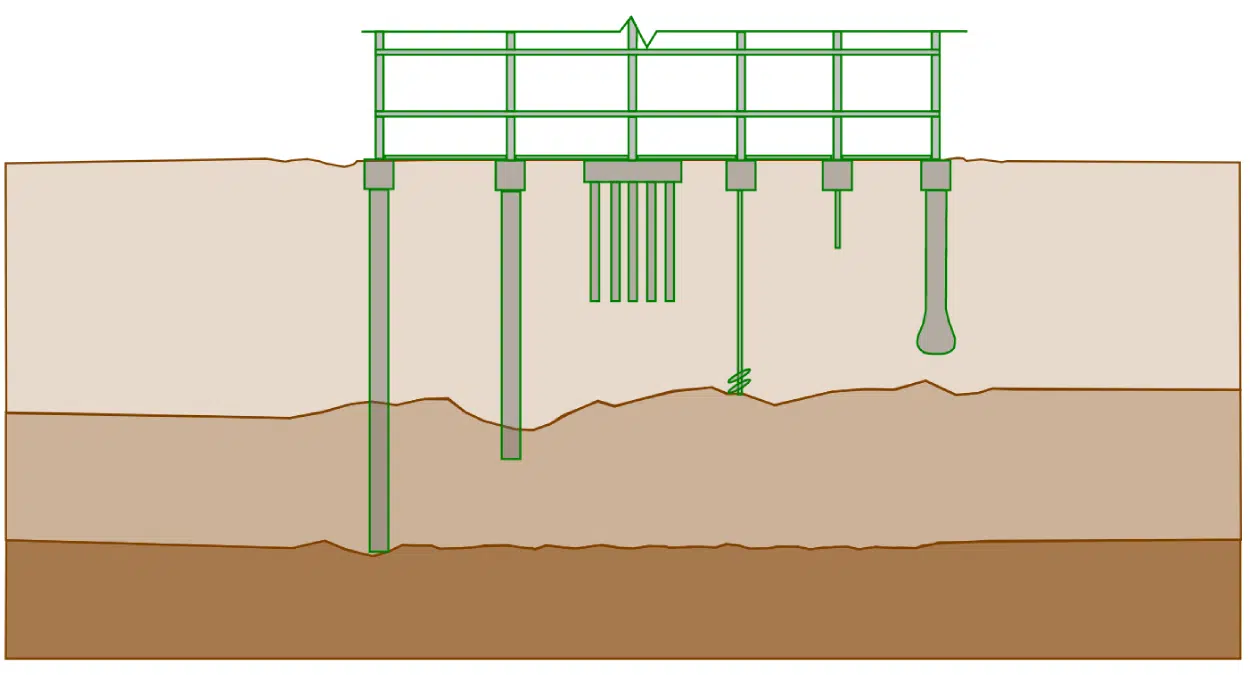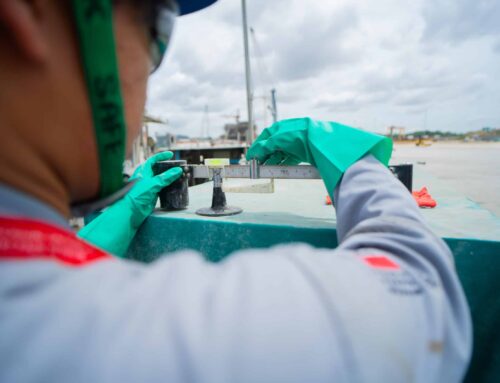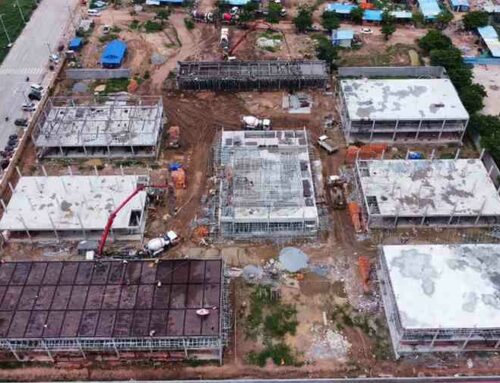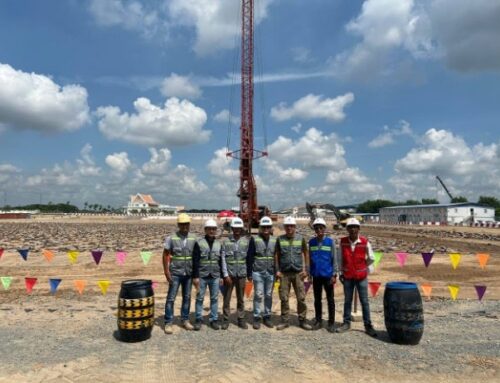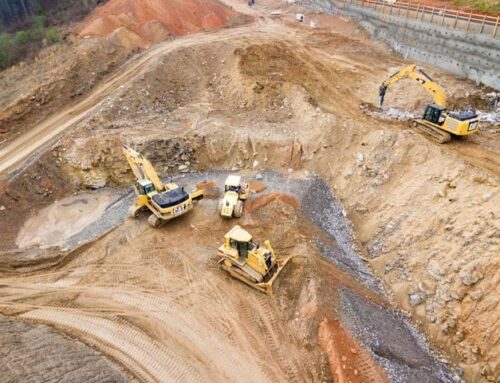Understanding Concrete Pile Foundations: Types and Benefits
Every successful building stands on a solid foundation—literally.
Foundations transfer the weight of the structure, transferring loads to the ground below and ensuring stability over time. Among the most well-known foundation methods are the pile foundation, a tried-and-recognized solution that is widely utilized. But is piling always the best option?
As construction evolves, so do foundation techniques. With advancements in technology and increasing emphasis on sustainability, alternatives solutions like ground improvement have emerged, which offers time, cost, and environmental benefits compared to conventional methods.
Let’s dive into these foundational approaches, starting with piles, and explore how ground improvement methods fill gaps in traditional construction strategies.
What is a Concrete Pile Foundation?
A concrete pile foundation is a type of deep foundation consisting of long, slender columns made of reinforced concrete. These piles are driven deep into the ground to reach a layer of soil or rock with adequate load-bearing capacity.
Their primary purpose is to support structures by transferring loads to deeper, stable layers. Types of concrete pile foundations include precast, driven, and bored piles, each suited to specific ground conditions and project requirements.
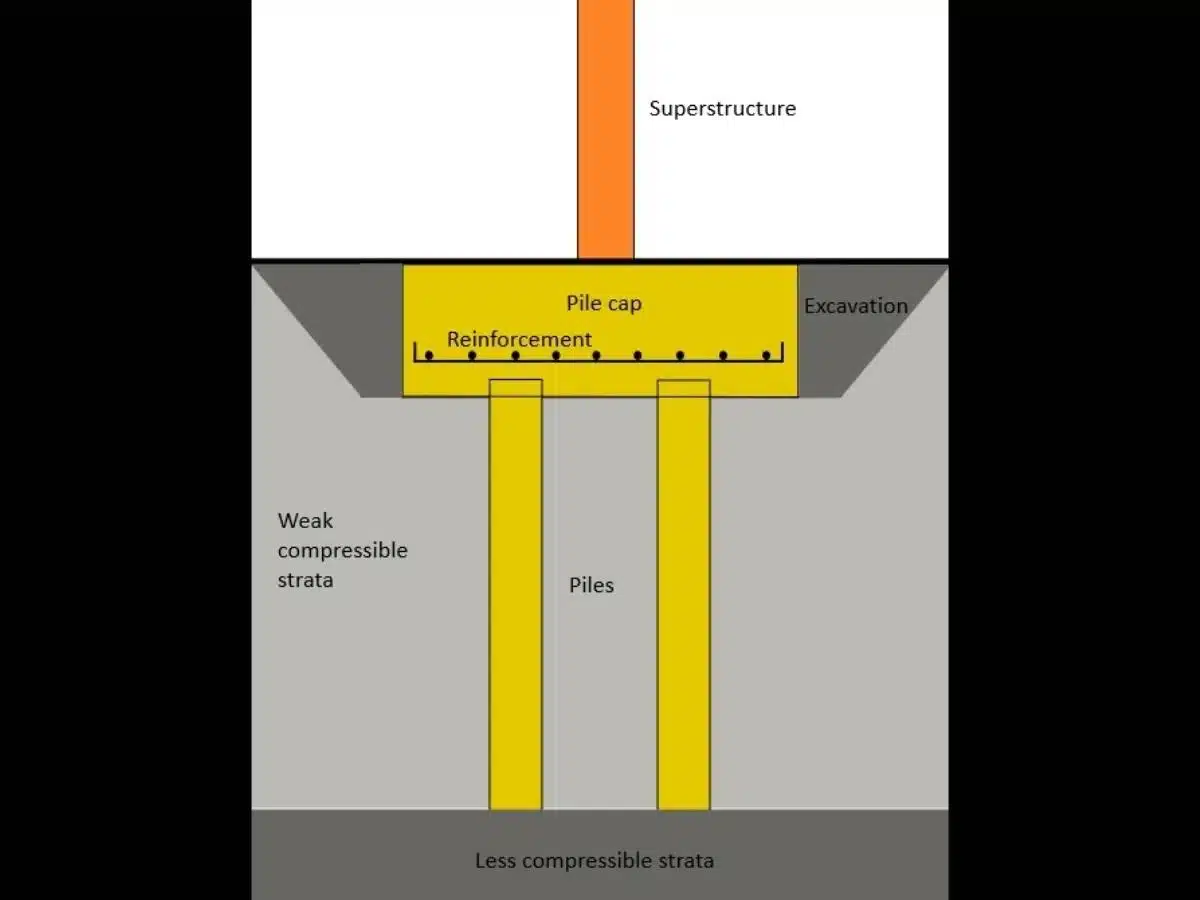
Image of how concrete pile foundation work (Source)
Why are Pile Foundations Used?
Pile foundations are typically used when surface soils lack the strength to support a building. This can occur in areas with loose sand, soft clay, or highly compressible organic soils. By driving piles deep into the ground, engineers can reach firmer strata capable of bearing significant loads.
Types of Concrete Pile Foundations
1. Precast Concrete Piles
These piles are manufactured in controlled environments. Once produced, they are transported to construction sites and driven into the ground using specialized equipment. This process allows for immediate load-bearing capabilities.
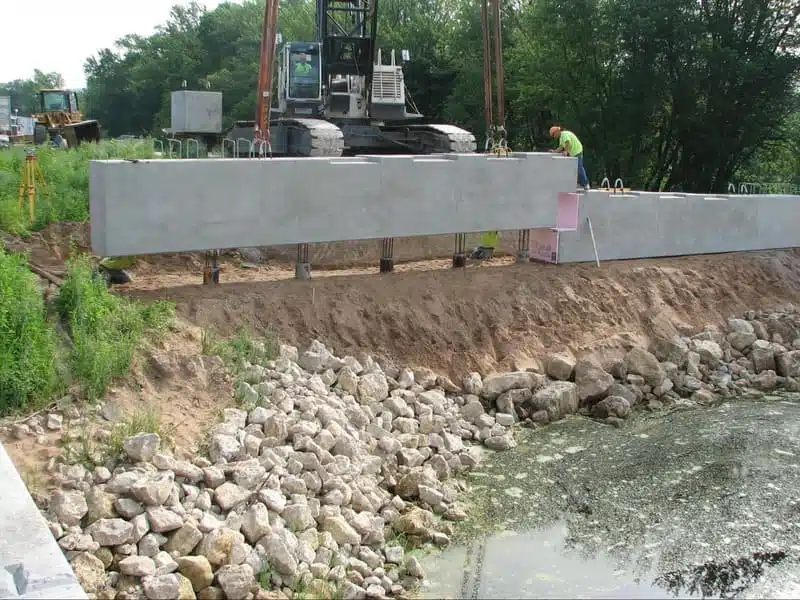
Image of precast concrete piles for onsite bridge construction (Source)
2. Driven Concrete Piles
The method involves using impact or vibration hammers to drive the piles to the desired depth, making them suitable for marine and offshore structures, as well as buildings requiring deep foundations.
3. Bored Concrete Piles
Constructed by drilling holes and filling them with concrete, bored piles are ideal for sites with dense or hard soil conditions.
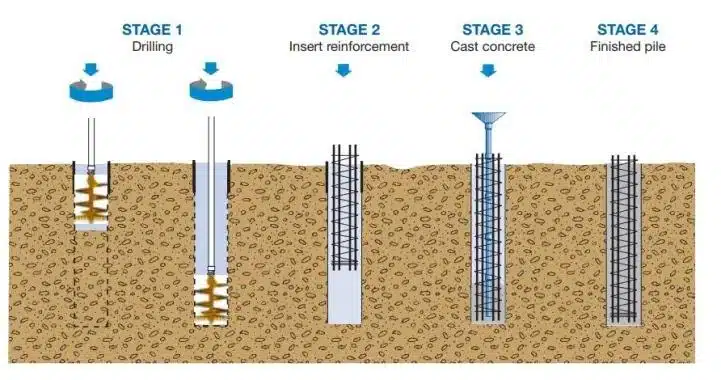
Image of bored concrete piles foundation (Source)
These piles can be tailored in terms of diameter and depth, providing flexibility in design. The minimal noise and vibration during installation make them suitable for urban areas with noise restrictions.
Pros and Cons of Concrete Pile Foundations
The benefits of pile foundations stem from their ability to support heavy loads and accommodate challenging soil conditions. By bypassing weaker upper layers, piles provide exceptional stability and are suitable for large and complex structures. They also have proven durability, with designs often tailored to specific geotechnical requirements.
However, they also come with notable drawbacks. The construction process is often labor-intensive, expensive, and time-consuming, requiring heavy machinery for installation. Additionally, piles can be environmentally taxing due to their reliance on materials like steel and concrete, both of which have high carbon footprints.
Bridging the Gap: Introducing Ground Improvement Solutions
While pile foundations are effective, they are not the only option. Ground improvement techniques offer viable alternatives that addresses many of the limitations of pile foundations, particularly in terms of cost, time, and environmental impact.
Ground improvement enhances the strength, stiffness, and bearing capacity of weak soils, eliminating the need for deep foundations and making the soils more suitable for shallow or direct foundations. Instead of bypassing problematic soil layers, this approach modifies or reinforces the soil to make it suitable for construction.
Settling Misconceptions
Despite the advantages offered by ground improvement methods, some clients perceive it as a higher-risk solution.
Many clients assume that ground improvement allows for settlement and, therefore, jeopardizes structural stability. However, the reality is more nuanced.
Piles do not eliminate settlement entirely—they transfer the load deeper, where minimal but inevitable movement occurs. Ground improvement methods, when designed and implemented correctly, manage settlement predictably and safely. Menard brings expertise in bridging this knowledge gap. Backed by Menard’s global network, we bring to clients reliable, efficient, and scientifically proven solutions.
Some of the widely used ground improvement methods:
- Controlled Modulus Column™ (CMC) Rigid Inclusion
- Dynamic Compaction
- Deep Soil Mixing
- Consolidation supported by Prefabricated Vertical Drain
When Should Ground Improvement Be Considered?
Ground improvement is a strong contender when:
The site conditions allow for soil enhancement rather than deep excavation.
Ground improvement techniques are most effective in areas with soft clay, loose sands, or other weak soils where traditional deep excavation may not be practical or cost-effective.
Uniform settlement is acceptable for the structure’s design.
Uniform settlement is often manageable in ground improvement projects, as these techniques distribute loads more evenly compared to pile foundations. This is particularly beneficial for structures like warehouses, embankments, and flexible pavements where minor uniform settlement is within design tolerances.
The project demands a cost-effective, sustainable solution.
Ground improvement is typically more economical than traditional deep foundation systems allows to optimize in terms of costs the construction of foundations, minimizes the need for extensive excavation or high-carbon materials like concrete and steel. Moreover, these techniques often utilize locally available materials, further lowering the environmental impact.
Comparing Pile Foundations and Ground Improvement
| Aspect | Pile Foundations | Ground Improvement |
| Installation time | Longer due to drilling and pile driving | Faster, often completed in fewer steps |
| Cost | Relatively higher, especially for deep piles | Lower due to reduced material and labor cost |
| Environmental Impact | Higher due to material use and emissions | Minimal material use and waste |
| Risk of Settlement | Minimal but not eliminated | Controlled settlement is designed into the system |
Conclusion: Choose Wisely, Build Smart
Every structure, whether a towering skyscraper or a modest home, relies on its foundation to bear its load, distribute it evenly to the ground, and prevent structural issues like settling or tilting.
Traditionally, pile foundations have been the go-to solution. Yet, other approaches such as ground improvement techniques are gaining traction for their efficiency, cost-effectiveness, and reduced environmental impact.
By addressing misconceptions, harnessing advanced techniques, and emphasizing sustainability, Menard empowers clients to build smarter and more responsibly. If you’re considering a foundation solution for your next project, let’s discuss how we can tailor a ground improvement strategy to your needs.
With over 3000+ projects delivered annually worldwide, Menard is ready to support clients wherever they are, offering advanced ground improvement technologies tailored to all types of structures—from airports to industrial facilities, in bustling city centers to remote regions.
Our commitment to innovation and quality ensures that we can meet the diverse needs of clients, providing reliable and robust foundation solutions that support the stability and longevity of structures across the region.
Contact us for expert consultation for your construction project. With Menard, you can ensure the stability and success of your construction projects, benefiting from our unparalleled expertise and commitment to excellence in geotechnical solutions.

